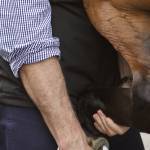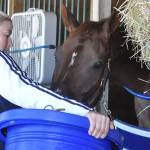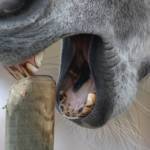Evaluating a Prospective Horse for Purchase

Looking for the perfect horse to purchase can be a long process that should not be rushed. It would not be unusual for a buyer to consider 40 horses, call the owners of 20 or 30 of them to get more information, go and look at 10 of those horses, try out five or six, and finally settle on the one that seems to be the best choice.
Don’t forget that there’s a reason the horse is up for sale. The owner is letting this horse go, and you need to know why. If you are considering buying a horse, get as much information as possible by asking the seller these questions.
- Why is the horse being offered for sale?
- How old is the horse?
- Is it a gelding or mare? Has the mare ever had a foal?
- Is it registered, and if so, with what society or association?
- How big is the horse? Has it been officially measured?
- What are the horse’s accomplishments in which disciplines and when?
- Does it have any major conformation faults?
- How does the horse handle floating, shoeing, catching, longeing, riding in traffic, riding around other horses, tying, and clipping?
- Is the horse forward-moving or sluggish?
- Does the horse have any undesirable behaviours such as windsucking, kicking, biting, or nipping?
- What sort of temperament does the horse have? Is it ever nervous? Does it ever shy?
- Is the horse or pony currently being ridden regularly? If not, how long has it been since it was last ridden?
- What condition is the horse in? Has it been regularly dewormed?
- When was it last checked by a veterinarian? Is it sound with clean legs?
- What age and level of ability is the present rider?
- Is a trial period possible?
If the horse seems suitable, the next stage is to go and see it. However, some owners may quiz you to ascertain that the horse is going to someone who is capable of caring for it and riding it, and may decide that you are not suitable for the horse at your present stage of riding.
When you set up an appointment to look at the horse, ask the owner if there will be someone to ride the horse for you, and take an experienced advisor with you. Arrive on time and dress appropriately (boots, helmet). Avoid taking young children unless you are purchasing the horse for them. If possible, see the horse being caught. Have the horse walked and trotted on a hard, level surface so you can view its natural action and gait. Together with your experienced advisor, look at the horse’s teeth to check the age, do a thorough conformation check, feel the legs, look at the feet (ask the owner to pick up the feet), ask about the farrier, notice any lumps and bumps and query them. If the horse passes your inspection, ask to see it ridden. Never get on a horse unless you have seen it being ridden first, and if you feel the horse is more than you can handle, do not ride it. The horse should be put through all its paces. If it is a jumper, then ask for that to be demonstrated. If you still think the horse is suitable, either you or your advisor should ride the horse and where possible take it on a trail ride away from its home property in the company of one or two other horses. If the horse meets all your requirements, you can start negotiating the sale.
Negotiation includes the price and method of payment, a trial period, the veterinary inspection and whether there is any guarantee with the horse. The seller may not allow a trial period because the question of who is legally responsible for the horse during this period can be difficult. If a trial is not permitted, try to negotiate at least one more opportunity to ride and handle the horse before buying it. Remember, though, that there will be many keen buyers for a good horse.
A veterinary inspection will identify health issues that you should consider before buying a horse. These include sight, internal disease, teeth, heart and lung function, skin disease, legs and feet. The vet should carry out a flexion test on each leg, which involves the leg being held in a flexed position for approximately one minute and the horse immediately trotted out by a handler, with the vet watching for lameness. The vet will need to know your intended purpose for the horse and it is possible that rather than proclaiming the horse as sound, the vet will instead give an opinion on the suitability of the horse for the intended purpose. Some vets will not do inspections because of liability claims.
Bear in mind that the absolutely perfect horse probably doesn’t exist, no matter how far you look. Be ready to compromise on minor points, such as a horse that is a little older, not quite as tall, or a different color from what you were looking for. Don’t compromise on temperament, manners, or soundness for any reason. Remember, some day you may need to sell this horse.
This article is adapted, with permission, from Horse Sense—The Guide to Horse Care in Australia and New Zealand(opens new window), second edition (2004).








